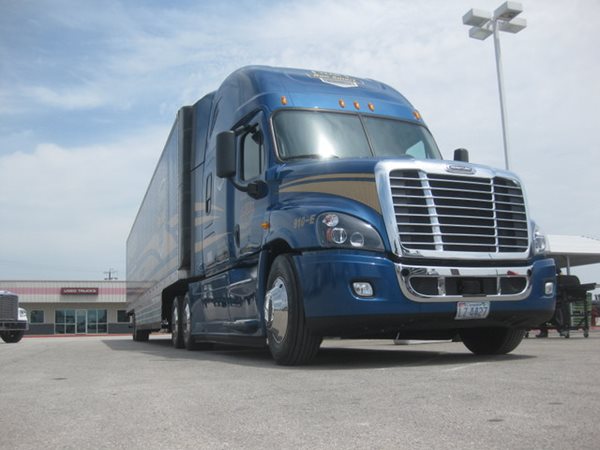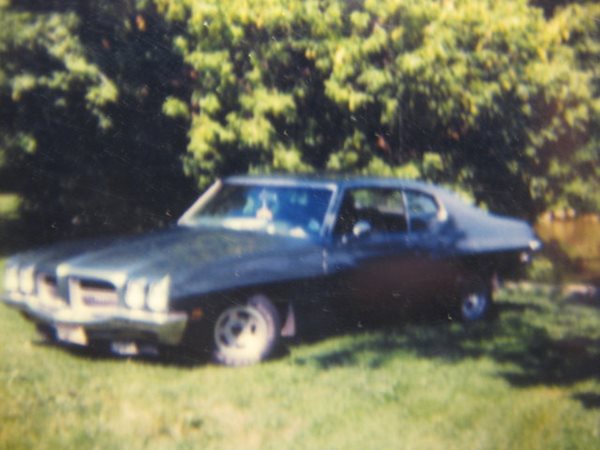 |
| I wanted to keep my first car and therefore had it repainted... I didn't want to buy one of those new "emissions" engines!!! |
Over the weekend, I was organizing some old boxes and came across automotive magazines from my youth. I managed to collect them over the years and always enjoyed my Dad sharing his old car magazines from his past. Just like him, I enjoy paging through history, reading the advertisements and getting a perspective of how people viewed issues years ago.
I’m older now and didn’t go through these boxes for at least twenty years. This time was different in that my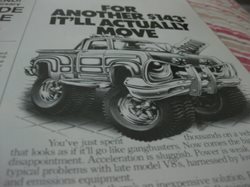 views have changed since reading these articles in the past. The magazines are from the early 70’s through the early 90’s. As I began reading some letters to the editor and tech questions, an issue of major concern in the 70’s was leaded fuel. The government was taking steps to eliminate leaded fuel for vehicles. Lead was used in fuel as an octane booster and valve seat lubricator. This meant that one day any engine produced without hardened valve seats, wouldn’t be able to survive without leaded fuel.
views have changed since reading these articles in the past. The magazines are from the early 70’s through the early 90’s. As I began reading some letters to the editor and tech questions, an issue of major concern in the 70’s was leaded fuel. The government was taking steps to eliminate leaded fuel for vehicles. Lead was used in fuel as an octane booster and valve seat lubricator. This meant that one day any engine produced without hardened valve seats, wouldn’t be able to survive without leaded fuel.
As I read these articles, it became apparent to me that there were many parallels in what happened in the automotive industry as to what occurred in the heavy duty truck market over the last decade or so. As the EPA got involved with automobiles, their performance and reliability levels decreased each year for quite some time. In 1971 the automotive manufacturers reduced compression ratios in their engines in order to survive lower octane unleaded fuel without detonation.
Here is a list of some parallels I came up with while doing some research on the subject.
1970 Congress passes the first major clean air act, requiring a 90% reduction in emissions from new automobiles by 1975.
1972 Exhaust gas recirculation valves (EGR) are developed as automakers strive to meet NOx standards.
1973 EPA releases a study confirming lead from automobile exhaust poses a direct threat to public health. Later that year, EPA issues final regulations gradually reducing lead in gasoline.
1975 First fuel economy goals along with more stringent fuel economy standards beginning with
1975 model vehicles.
The “first generation” catalytic converters are built, significantly reducing vehicle emissions. Unleaded gasoline is also introduced because leaded gasoline may cause damage of catalytic converters.
1981 New cars meet the amended Clean Air Act standards for the first time. Sophisticated three-way catalyst with onboard computers and oxygen sensors appear in most new cars, helping to optimize the efficiency of the catalytic converter. |
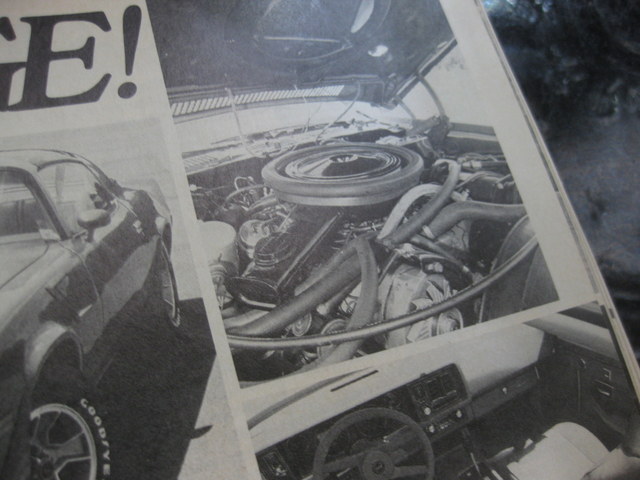
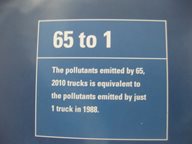 |
1985 EPA sets stringent standards for emissions of NOx from heavy-duty engines and of PM from heavy-duty diesel-powered trucks and busses.
1990 EPA imposes limits on diesel fuel sulfur content to help busses and trucks meet the
1985 emission standards (which become effective in 1990’s).
1997 EPA adopted new emissions standards for model year 2004 and later heavy-duty diesel truck and bus engines. These standards reflect the provisions of the Statement of Principles signed in 1995 by the EPA, California ARB, and the manufacturers of heavy-vehicle duty engines. The goal was to reduce NOx emissions from highway heavy—duty engines to levels approximately 2.0g/bhp.hr beginning in 2004.
2000 EPA signed emissions standards for model year 2007 and later heavy-duty highway engines. The rule includes 2 components. (1) Emissions standards and (2) diesel fuel regulations.
. PM-0.01 g/bhp-hr
. NOx-0.20 g/bhp-hr
. NMHC-0.14 g/bhp-hr
2004 (EGR) is used to meet emissions on heavy-duty diesels.
2006 Ultra low sulfur diesel produced 15 parts per million vs. 500 parts per million for low sulfur diesel fuel.
2007 Diesel Particulate Filters (DPF) fitted to heavy-duty diesel engines to meet ever more stringent emission requirements. This is the reason for the ultra-low sulfur diesel which was introduced in 1996.
2010 EPA regulations require an 83% reduction in NOx emissions from EPA 2007 emissions levels. Most manufacturers meet the 2000 emission standards at the tailpipe by running an engine with selective catalytic reduction (SCR) technology. |
My take on the automotive side is that each year leading towards 1981, the cars had reduced performance and reliability issues. In the years following 1981, the trend changed and improvements were made. It wasn’t until the 1990’s that were noticed horsepower levels meeting those of the late 1960’s or very early 1970’s. Today, automobiles perform better than ever.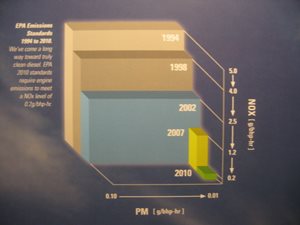
In regards to heavy- duty trucks, the path is similar. The one big advantage was most diesel engines were already electronically controlled prior to the onset of emissions requirements. In 1985 Detroit was ahead of the curve by offering the first electronic fuel injection system for diesel engines. I look at the 1990 reduction of sulfur in diesel fuel to the 1975 phase-in of unleaded gasoline. I remember the 70’s cars having an issue dealing with the unleaded fuel just as the older diesel engines developing problems operating low sulfur fuel. In 1972, automotive picked up EGR and in 2004, heavy duty diesel engines added the same valve. In bothcases, performance and fuel economy was reduced. In 1975, automobiles began the use of catalytic converters and unleaded fuel just as 2007 heavy duty diesels required DPF and ultra-low sulfur diesel fuel. The 1981 automobiles met the amended clean air act standards for the first time with more sophisticated catalysts onboard recorders and many new sensors. Heavy duty diesels switch to SCR in 2010 just as the autos did in 1981. Efficiency and reliability began to improve each and every year.
In conclusion, looking back on history, it hardly seems like a good idea that we were using tetraethyl lead as a gasoline additive. Also, I would imagine in 20 years from now when looking back in history, we won’t believe how people tolerated the clouds of diesel smoke which once poured from the exhaust pipe of any diesel engine. Today, the pollutants emitted by 65, 2010 trucks is equivalent to the pollutants emitted by just 1 truck in 1988. Just like automobiles, the trucks are running better than ever.
